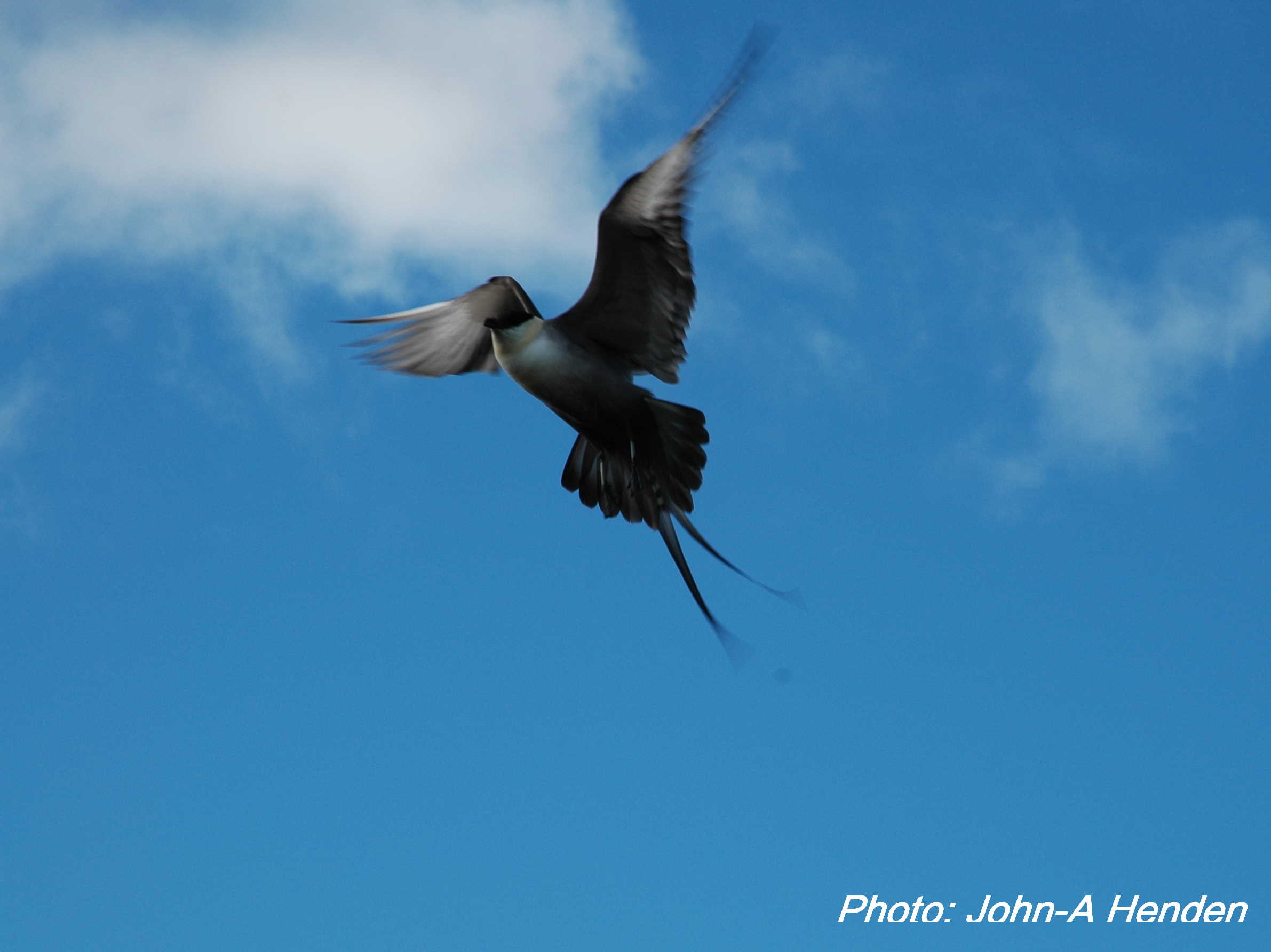| Predators
Arctic predators and predator-prey interactions |
|
Long tailed skua one of the specialist predators in Finnmark |
| The other guild of predators is very dependent on the cyclic occurrence of small rodent peak for successful reproduction, and includes species as long-tailed skua, snowy owl, rough-legged buzzards, small mustelids and Arctic fox. The recent changes in small rodent population dynamics with dampened population cycles and lower peak abundances is likely to negatively affect these predators. This issue is studies explicitly within the project “ Arctic Predators ” and “ Arctic fox in Finnmark ”. The more general role of small rodent specialist in the low arctic tundra food web is studies within the project “ Willow thickets as hot spots ” for biodiversity and ecosystem interactions |
 The species assemblage of vertebrate predators in tundra ecosystems consists for two foraging guilds; one is specialists on small rodent prey, while the other is quite omnivorous preying what prey is most available in time and space. The latter group, which consists of species like the wolverine, red fox, white-tailed and golden eagles and corvids, appear to be much subsidized by reindeer carrion in the winters. We have therefore devoted particular subprojects within our projects “
The species assemblage of vertebrate predators in tundra ecosystems consists for two foraging guilds; one is specialists on small rodent prey, while the other is quite omnivorous preying what prey is most available in time and space. The latter group, which consists of species like the wolverine, red fox, white-tailed and golden eagles and corvids, appear to be much subsidized by reindeer carrion in the winters. We have therefore devoted particular subprojects within our projects “